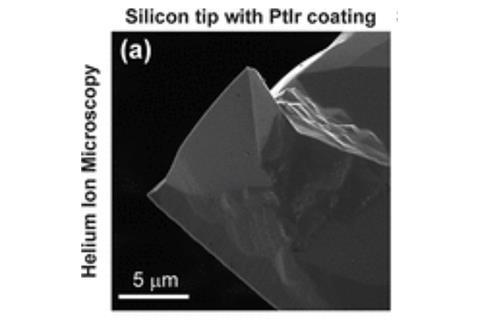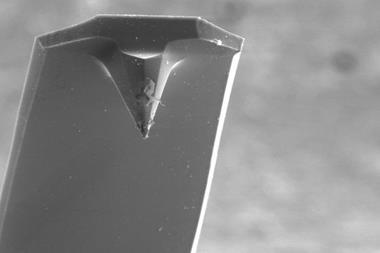Proper cleaning of atomic force microscopy cantilever tips called for to rid them of silicone oils

Atomic force microscopy (AFM) tips might not be the impartial, inert probes they are hailed as. Tips that aren’t cleaned before use deposit silicone oils – residues from packaging material – onto samples during measurements potentially altering the results, US researchers have discovered.
Scientists use AFM to visualise individual atoms, reaching resolutions 1000 times better than the optical diffraction limit. To do this, an atom-sharp tip attached to the end of a cantilever is scanned over a sample. Forces between the tip and the surface that bend the cantilever are detected and converted into an image.
AFM tips need to be chemically inert. Made out of silicon coated with diamond or noble metals, or entirely out of metal, they are meant to image but not alter the sample. However, this might not always be the case. A team led by Olga Ovchinnikova and Anton Ievlev from Oak Ridge National Laboratory discovered that out-of-the-box tips are covered in silicone oils, which are spread widely around any surface the probe is used on.
The oils are residues from polydimethylsiloxane-lined boxes the tips are shipped and stored in. As AFM measurements rely on tiny force changes, any contamination can distort the mechanical, electrical and electrochemical response of the tip to the sample.
To clean AFM tips, the researchers recommend thorough irradiation with a beam of helium or bismuth ions.
References
A V Ievlev et al, Anal. Chem., 2018, DOI: 10.1021/acs.analchem.7b05225

















No comments yet